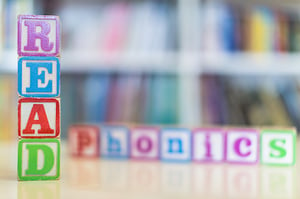
Phonics is at the very heart of how children learn to read. More specifically, the concept of phonics involves learning how letters have certain sounds — for example that the letter “F” has the sound that starts the word “fish.” Armed with this knowledge, your child can begin to sound out words and start to comprehend the relationship between the written and spoken word.
To help your child understand phonics, Scholastic.com offers these tips:
- Ask your child’s teacher for suggestions and share any concerns you may have about your child’s progress. You might ask the teacher which books are specifically written with phonics in mind to help your child learn to read.
- Invite your child to read to you daily and listen to what is read. If he or she stumbles, ask your child to follow the letter patterns and sound out the words; if that doesn’t work, share the confusing word to prevent feelings of discouragement.
- Read out loud to your child, as well, knowing that it’s perfectly fine if your child wants favorite books read over and over again. It’s actually beneficial to repeat favorites and to ask your child questions—for example, about what a character in the book might be thinking or feeling.
- Let your child see how much you enjoy reading! This, all by itself, can go a long way in teaching children the joy of the printed word.
Scholastic also provides kits to teach phonics.
GreatSchools.org offers more teaching ideas, ones that include singing the alphabet together and including alphabet books in your reading mix. The site also recommends word games, which can include flash card games such as Go Fish and Memory, or Tic-Tac-Toe where you use letters other than the standard X and O.
Other recommended word games include going on letter hunts together where you write a letter on top of a piece of paper and then search for items in your home that start with that letter or sound. Your child can write down each word and/or draw a picture of each item. Other fun methods of teaching children include making letter shapes out of clay, drawing them with crayons or paint, or forming them with sugar or sand. Possibilities are endless!
If your child enjoys watching videos, you can find some here at ReadWithPhonics.com.
VeryWellFamily.com provides even more ideas for word games that can help your child to understand letter sounds and learn to read. They include alphabet ball, where you can adapt the game to your child’s current level of comprehension. For example, you could say a letter and roll the ball to your child. In turn, he or she needs to make the corresponding letter sound before rolling the alphabet ball back to you.
There are plenty of free phonics worksheets available online that are designed to help children learn letter sounds. You can print out the worksheets and, early on, do them with your child. As he or she gains skills and confidence, you can print worksheets that teach phonics and let your child work independently. You can be available to answer questions but otherwise allow your child to explore letter patterns, sound out the words on the worksheets and more.




